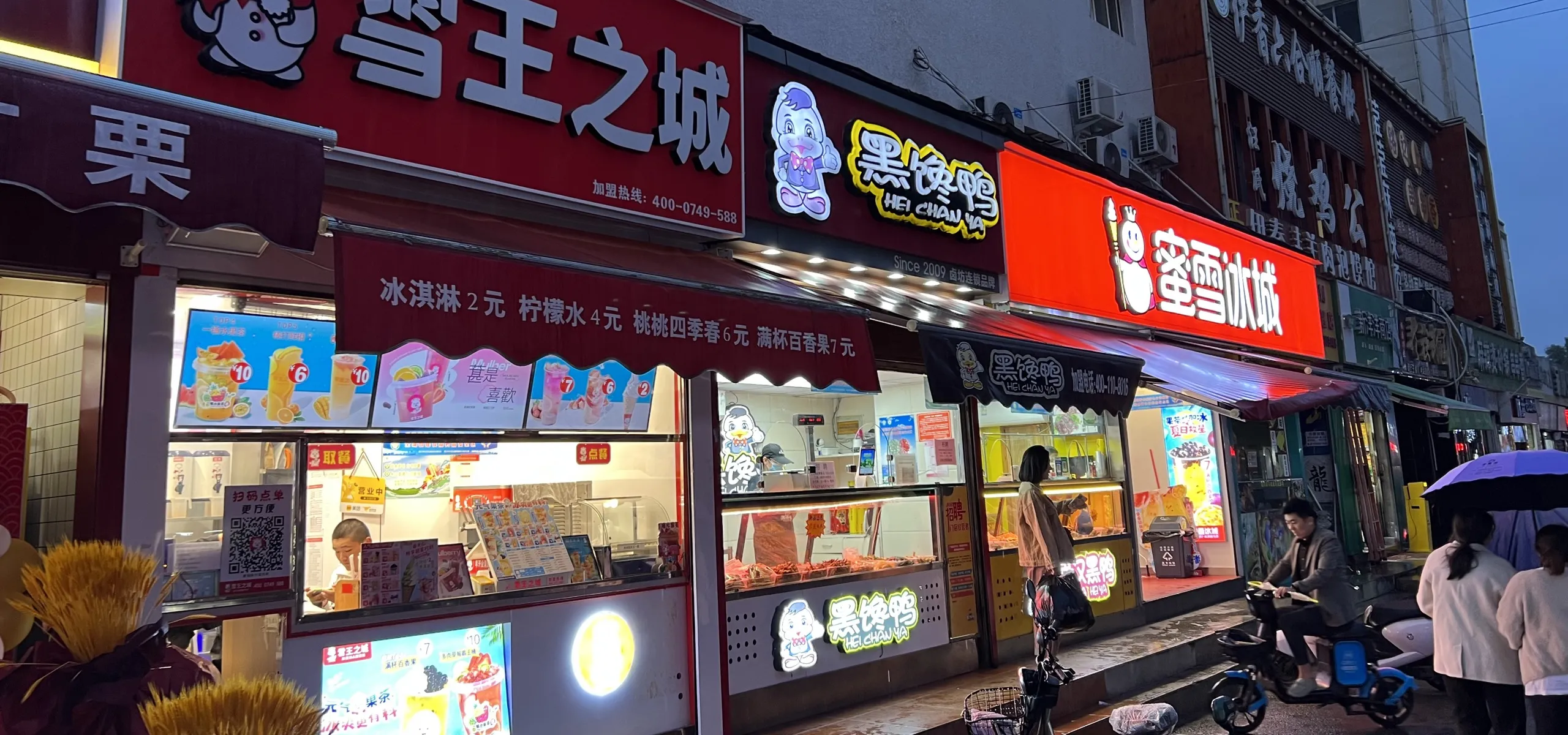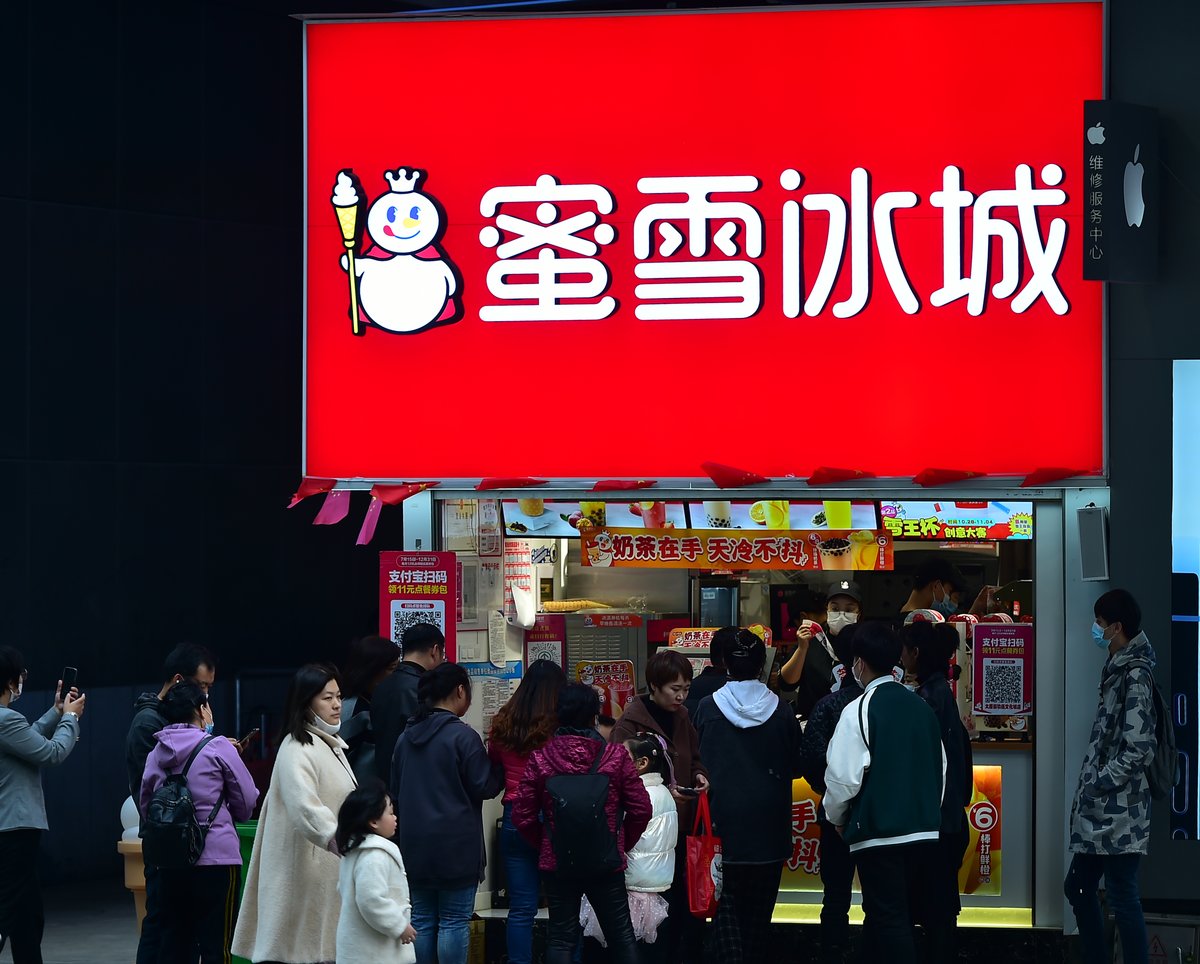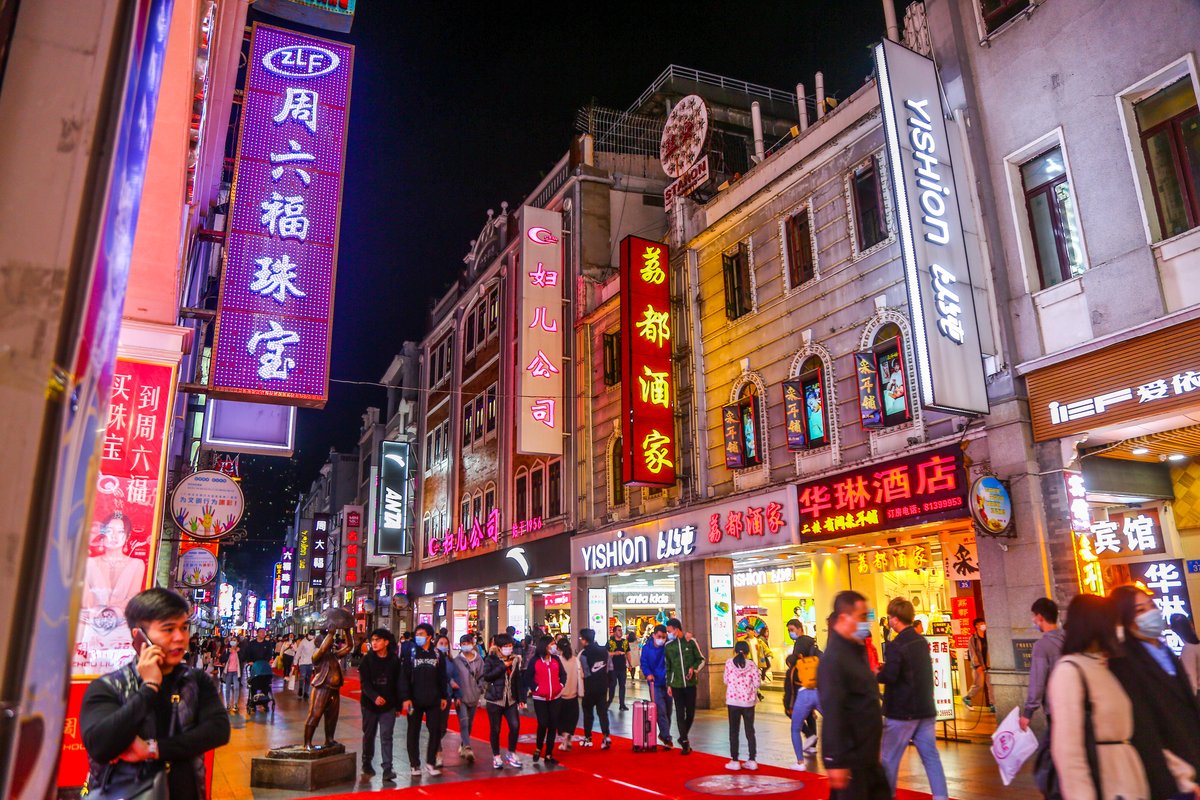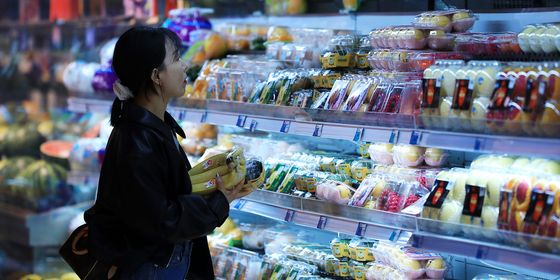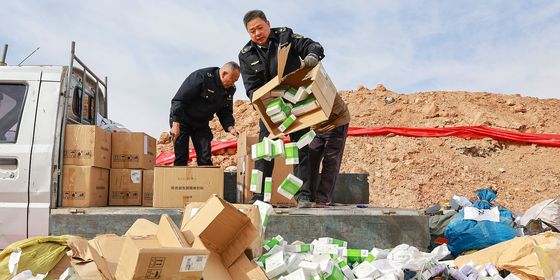The pandemic and a slowing economy have seen Chinese consumers flock to low-price brands, from milk tea to clothing
On a Friday night, the shopping streets of Yinchuan, the capital city of 2.8 million people in China’s northwestern Ningxia region, are filled with the sound of a hypnotic jingle for a milk tea brand that has taken the country by storm.
On what seems like every street, garish red and white storefronts decorated with the brand’s curious smiling snowman mascot (the “Snow King”) attract hordes of thirsty and thrifty customers, while speakers pump out a mesmerizing beat into the night sky: “I love you, you love me, Mixue ice cream and tea” plays on a relentless loop at excruciating decibels.
At Mixue Bingcheng, customers can get bubble tea for 7 yuan, an iced lemon tea for 5 yuan, or, perhaps most famously, a soft-serve ice cream cone for as low as 2 yuan. The brand, with its extraordinarily low prices, kitsch marketing, and unabashedly commercial feel, recently raised over 2 billion yuan in funding and plans to soon float on the Hong Kong Stock Exchange. It has risen mostly off the back of its popularity in provincial capitals and “lower-tier” cities in China’s interior, like Yinchuan, which are home to around 60 percent of Mixue Bingcheng stores.
According to the latest valuation, the company is worth around 60 billion yuan, making it the highest valued milk tea chain in the world, far more valuable than better-known and more prestigious brands like Xicha (HeyTea) and Naixue (Nayuki), which attract the attention of Chinese and international media for their success in China’s big eastern cities and freshly brewed tea costing up to 30 yuan (Naixue floated on the Hong Kong exchange in June 2021, but quickly saw its shares halve in value since).
While the retail sector overall has struggled during the pandemic, Mixue Bingcheng opened over 10,000 new stores since 2020, for a total of 20,000 stores at the time of writing, up from 1,000 in 2014. As “middle class groups in China’s first-tier cities and megacities are seeing their income growth slowing, or their cost of living rising, they are downgrading their consumption,” says Wu Changchang, a professor of media and communications at East China Normal University. This is leading budget brands to boom, even into larger cities like Beijing and Shanghai where traditionally wealthier consumers have shunned them for higher price brands.
“The restaurants I often visit have changed from Haidilao to the kebab stall on the street,” 26-year-old Lin Hao told Haixia News, a Fujian-based news platform, in May. Trendy hot pot chain Haidilao lost over 4 billion yuan in 2021 and announced it would close 300 of its restaurants, while the hashtag “Why don’t people go to Haidilao anymore?” also trended on Weibo earlier this year, alongside images of nearly deserted restaurants that customers used to line up to enter for hours at a time.
Meanwhile, budget fast food brand Wallace, which sells fried chicken burgers for 10 yuan or less and has over 20,000 stores, more than KFC and McDonald’s combined, made 5.6 billion yuan in revenue in 2021, up from 2.3 billion yuan in 2018. Wahaha, a cheap bottled water and beverage brand which sells yogurt at less than 2 yuan a bottle, saw sales increase 17 percent in 2021, the highest jump in seven years. Fashion brand Yishion, which has over 6,000 stores nationwide, mostly in lower-tier cities, occupied the top spot on Douyin’s clothing brand list for nearly half a year in 2019. “Mixue Bingcheng is not a singular phenomenon,” says Wu.
These brands are successful due to their value for money. Mixue Bingcheng, for example, is a budget brand that seems to go against all the trends identified in Chinese consumer preferences over the last few years: It makes no effort to appear health-conscious; it offers no “experience” to customers (its outlets often have no seating or even standing room indoors, but are literal holes in the wall); it has weathered numerous food safety scandals and does not use fresh ingredients, with nearly all its drinks made from instant powders; and it markets itself with no pretensions about prestige, avoiding the Starbucks-inspired café designs of other brands.
Yet it is now the largest milk tea brand in the world, with nearly 15,000 more stores than the next largest, Shuyi, and has seen profits soar from 445 million in 2019 before the pandemic to 1.91 billion yuan in 2021. Investor China, a financial analysis website, estimates Mixue Bingcheng sold 3.5 billion beverages in 2021. Copycats with names like “Snow King City” and “Ice and Snow City” have even begun to pop up in smaller cities like Yinchuan.
Middle class workers in China’s biggest cities are now looking to save money against the backdrop of a slowing economy, which has seen record unemployment rates this year; meanwhile “those in lower-tier city markets (下沉市场) are maintaining their consumption levels and habits,” argues Wu.
In fact, Mixue Bingcheng has been a growing success story for many years, at least since around 2015. It was founded in 1997 in Zhengzhou, capital of the central Henan province, but it is only now gaining recognition from mainstream media because it has broken into larger cities, having previously only operated in smaller cities and towns in China’s interior.
“The most extravagant, luxury spenders have stayed the same,” argues Wu, but now the middle class is entering the lower-tier market. “People are paying attention to the value of the goods they buy, they want good-quality, low-price products.” In July this year, domestic ice cream brand Zhong Xue Gao (Chicecream) and other high-end competitors went viral for their high prices, and in 2021, when the same company went viral for a 66 yuan ice cream, many compared it unfavorably to the cheapness of Mixue Bingcheng.
On Douban, a social media platform popular with young professionals and artsy urbanites, a group named “Have you downgraded your consumption today?” has over 360,000 members, who share tips for saving money and their worries about spending. On Xiaohongshu (RED), one post tagged “consumption downgrade” posted in April this year lists “don’t order takeout” and “drink less than one milk tea a day” as methods for saving money.
According to a 2021 report by Beijing Normal University, nearly 70 percent of young consumers think first about value for money when they make purchases. Likewise, a report by JD.com last year showed 58 percent of young consumers buy “only what I need,” while around 18 percent “buy whatever I can within my means.”
With squeezed wallets, attitudes toward budget brands are also changing. Low-cost brands have consistently been popular in lower-tier cities, but in Beijing, Shanghai, Guangzhou, and elsewhere in the past, low-cost products were seen as “embarrassing” or “not fitting a middle class identity,” according to Wu.
But now, even these consumers are happy to buy cheap. For example, budget online shopping platform Pinduoduo shot to fame around 2018 by catering to consumers in lower-tier cities and rural areas via group-buying schemes that reduced prices. The company saw second-quarter earnings grow 36 percent this year compared with 2021, and now it is even favored by white collar workers in more affluent cities.
In the past, concern with “prestige” and “being laughed at” for budget purchases meant consumers in wealthier areas and even mainstream media sneered at Pinduoduo and similar budget brands, highlighting concerns over fake products and copycats, while questioning their quality, according to an editorial in Economic Daily from May 2021. Now, though, with value for money more prized even by the middle class in big cities, consumers are making “more rational” purchasing decisions, “spending less money and enjoying almost the same quality,” according to the editorial. Now, there is more positive media attention on these brands and even an embrace of thrift as a virtue.
On Douban, a post from March 2021 asks “Does everyone think that drinking Mixue Bingcheng is embarrassing?” The top reply, with over 3,200 likes, reads: “How could it be embarrassing? A bottle of Coca-Cola is 3 kuai and no one thinks that’s embarrassing.”
Yet it hasn’t been entirely smooth sailing for Mixue Bingcheng and other brands. The milk tea giant has come under scrutiny for its franchise model, which requires shop owners to sell in bulk to make a profit, and suppress wages for staff to keep costs down. Likewise, in August this year a woman in Zhengzhou found an insect in her lemon tea, while a spate of expired ingredient scandals, and other complaints about the brand—there are over 4,000 entries related to Mixue Bingcheng on Black Cat, an online platform for consumer complaints—indicate that food safety remains a concern for Chinese consumers, and may yet prove to be the brand’s Achilles’ heel.
Despite this, the brand continues its impressive growth, the vanguard of a wave of expanding budget brands finally moving into China’s biggest cities. On Maimai, a job searching platform, a comment from April this year reads: “I’ve got 1,000,000 yuan, should I buy a house in Beijing or open up a Mixue Bingcheng in my hometown?” As the property sector continues to face a downturn and new college graduates find themselves out of a job, it might be safer to start selling milk tea.





